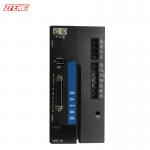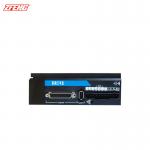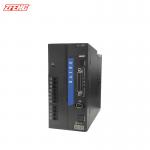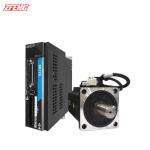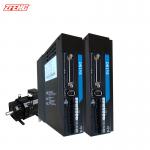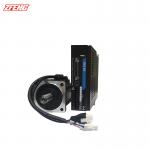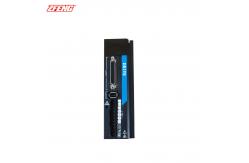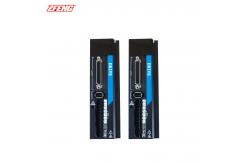ZF-S200 Series Electric Servo Drive Systems Electric servo system is one of the core control systems in the
field of modern industrial automation. It achieves high-precision
and high response motion control through electrical means and is
widely used in machine tools, robots, printing equipment, packaging
machinery and other fields. The following is a detailed analysis of
the electrical servo system:
System composition
The electrical servo system mainly consists of three parts: servo
driver, servo motor, and encoder (or sensor): - Servo driver: As the "brain" of the system, it is responsible for
receiving control commands (such as position, speed, torque
commands) and adjusting the output in real time based on feedback
signals to drive the servo motor to operate. The driver integrates
a power amplification unit, a control algorithm unit, and a
communication interface unit internally, achieving high-precision
control through complex control algorithms such as PID control.
- Servo motor: an actuator that converts electrical energy into
mechanical energy to drive load movement. According to the type of
motor, it can be divided into DC servo motor and AC servo motor.
Among them, AC servo motor (especially permanent magnet synchronous
motor) has become the mainstream choice due to its high efficiency,
fast response, and simple maintenance.
- Encoder/Sensor: Feedback device that monitors physical quantities
such as the position, speed, or torque of the motor in real time
and feeds back the signal to the driver. Encoder is a key component
in servo system, and its accuracy directly affects the control
accuracy of the system.
Working principleThe electrical servo system adopts a closed-loop control method,
and its working principle can be summarized as follows: - Command input: The control system (such as PLC, CNC) sends target
commands (position, speed, or torque) to the servo drive.
- Drive control: The driver calculates the output voltage or current
through control algorithms based on instructions and feedback
signals, and drives the servo motor to operate.
- Feedback regulation: The encoder monitors the actual position,
speed, or torque of the motor in real time and feeds back the
signal to the driver. The driver compares the feedback value with
the target value, calculates the deviation, and adjusts the output
until the deviation approaches zero.
Technical Advantages- High precision: Through closed-loop control, the system can achieve
positioning accuracy at the micrometer or even nanometer level.
- High dynamic response: The system has a fast response speed and can
adapt to high-speed and high acceleration motion requirements.
- High stability: Through feedback mechanism, the system can
automatically correct errors and resist external interference.
- Multifunctionality: Supports multiple control modes such as
position, speed, torque, etc., to meet different application
requirements.
|
